Health exams for: #AGEGROUP#
The following exams, tests, and procedures are recommended for #AGEGROUPLOWER#.#FEMALETEXT#
Select a link from the list below to learn how and why each test is performed, as well how to prepare for it.

The following exams, tests, and procedures are recommended for #AGEGROUPLOWER#.#FEMALETEXT#
Select a link from the list below to learn how and why each test is performed, as well how to prepare for it.
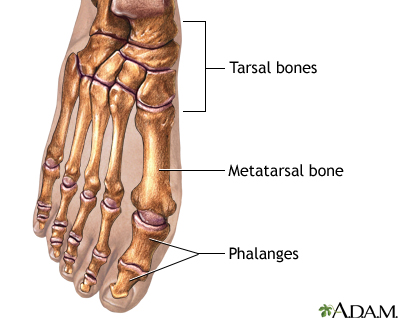
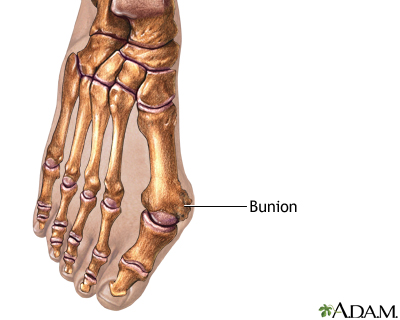
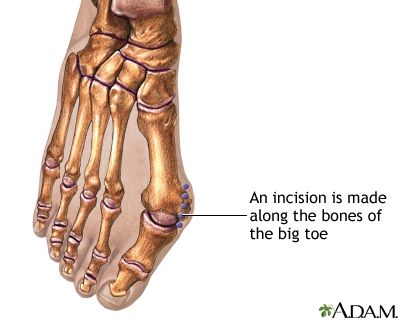
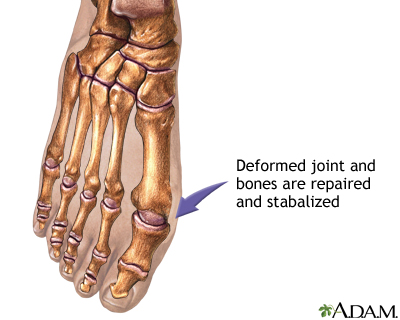
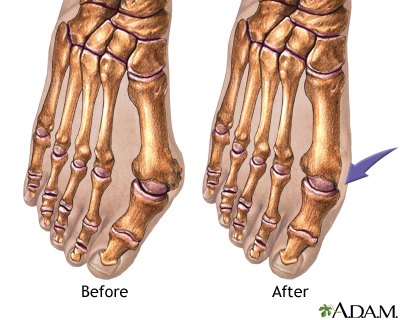
The foot is made up of tarsal bones, metatarsal bones and phalanges.
The foot is made up of tarsal bones, metatarsal bones and phalanges.
A bunion is a painful deformity of the bones and joint between the foot and the big toe. Long-term irritation (chronic inflammation) from arthritis, poorly-fitting shoes, or heredity causes the joint to thicken and enlarge. This causes the bones of the big toe to angle in toward and over the second toe, the foot bone (metatarsal) to angle out toward the other foot, and the skin to thicken (callus formation).
A bunion is a painful deformity of the bones and joint between the foot and the big toe. Long-term irritation (chronic inflammation) from arthritis, ...
Surgery is recommended to correct the deformity, reconstruct the bones and joint, and restore normal, pain-free function.
Surgery is recommended to correct the deformity, reconstruct the bones and joint, and restore normal, pain-free function.
Removal of a bunion is usually done while the patient is deep asleep and pain-free (general anesthesia) and rarely requires a hospital stay. An incision is made along the bones of the big toe into the foot. The deformed joint and bones are repaired and the bones are stabilized with a pin or cast.
Removal of a bunion is usually done while the patient is deep asleep and pain-free (general anesthesia) and rarely requires a hospital stay. An incis...
The patient is advised to keep the foot propped up and protected from pressure, weight, and injury while it heals. Complete recovery may require 3 to 5 weeks.
The patient is advised to keep the foot propped up and protected from pressure, weight, and injury while it heals. Complete recovery may require 3 to...
Review Date: 6/8/2022
Reviewed By: C. Benjamin Ma, MD, Professor, Chief, Sports Medicine and Shoulder Service, UCSF Department of Orthopaedic Surgery, San Francisco, CA. Also reviewed by David C. Dugdale, MD, Medical Director, Brenda Conaway, Editorial Director, and the A.D.A.M. Editorial team.



